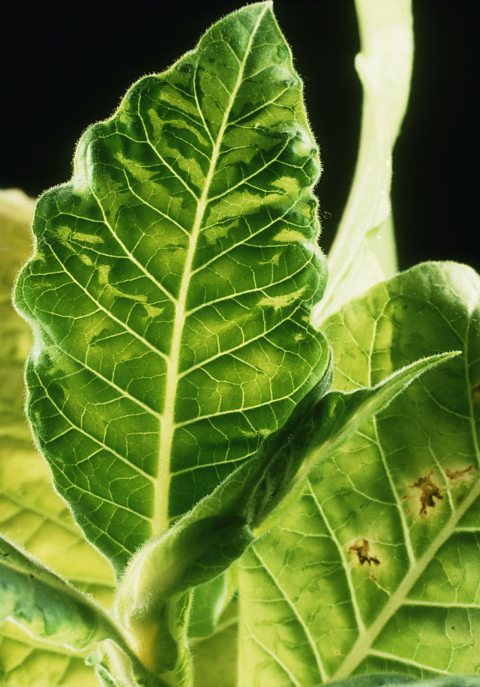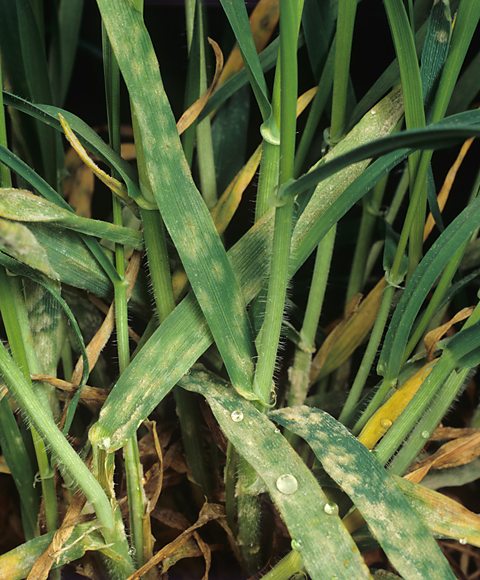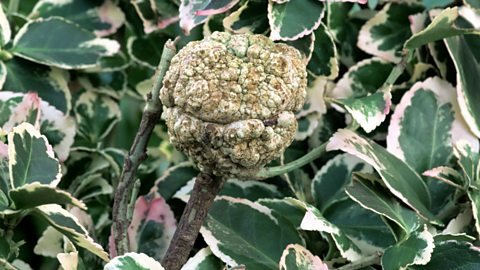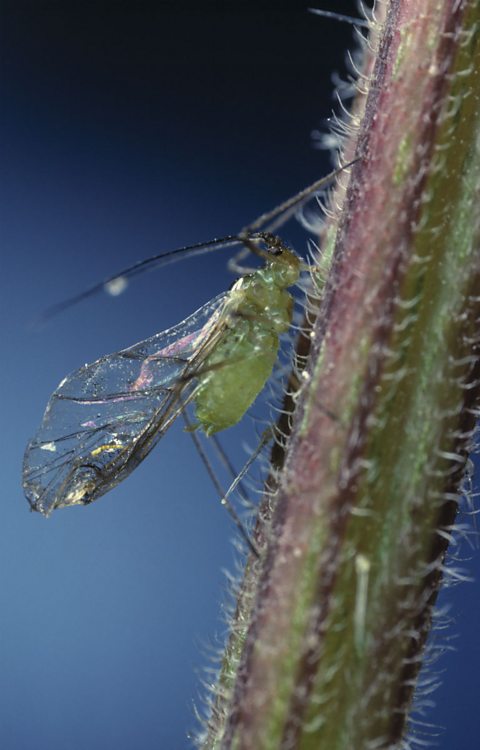Pathogens as causes of plant diseases
A pathogenMicroorganism that causes disease. is an organism that causes a disease. There are four main types of pathogen:
- virusAn ultramicroscopic infectious non-cellular organism that can replicate inside the cells of living hosts, with negative consequences.
- bacteriaSingle-celled microorganisms, some of which are pathogenic in humans, animals and plants. Singular is bacterium.
- fungiA large group of eukaryotic organisms that contain single-celled yeasts, moulds and mushrooms.
- protistA eukaryotic, usually single-celled organism of the kingdom Protista.
All types of pathogen infect a hostThe organism lived on or in by a parasite., reproduce (or replicate themselves if a virus), spread from their host and then infect other organisms.
Diseases caused by pathogens are called communicable diseaseA disease that is caused by a pathogen and so is transmitted rather than inherited or caused by an environmental factor.. This means they can be caught. The spread of communicable diseases is called transmission The spreading of pathogenic disease, for example by touch, food, water..
Plant pathogens kill or reduce the growth of many plants, which in turn can reduce biodiversity. Plant pathogens of food crops are especially serious, such as the Irish potato famine around 1850, which caused the deaths of large numbers of people through starvation. The pathogen caused 'blight' - an infestation that discolours the leaves but also rotted the tubers – making the potatoes inedible.
Viruses

The tobacco mosaic virus infects tobacco and lots of other closely related plant species like tomatoes and peppers. It is transmitted by contact between plants, either naturally or on the hands of farmers. It infects the chloroplastContains the green pigment chlorophyll; the site of photosynthesis. of plant leaves and changes their colour from green to yellow or white in a mosaic pattern. It can also make leaves crinkled or curled up. This reduces the plant's ability to photosynthesisA chemical process used by plants to make glucose and oxygen from carbon dioxide and water, using light energy. Oxygen is produced as a by-product of photosynthesis. Algae subsumed within plants and some bacteria are also photosynthetic. and grow properly, which can reduce farmers' crop yieldThe mass of a crop produced..
There is no cure, so farmers' only option is to stop their crops from being infected or reduce the spread if crops are infected.
Barley powdery mildew

The fungus Erysiphe graminis causes a disease commonly called barley powdery mildew. It infects grass plants, including crops like barley and causes a fluffy white growth on the leaves. The disease is common in cooler, damper climates, such as in the UK. Eventually the plant stops being able to make chlorophyllThe green chemical inside the chloroplasts of plant cells. It enables photosynthesis to take place. and so cannot photosynthesise to make its own food. This leads to the death of the plant. The fungus produces sporeA unit of asexual reproduction in some organisms. in order to reproduce. The spores can be spread by the wind. Powdery mildew is treatable using fungicideA chemical which kills fungi. and by removing and carefully destroying infected leaves.
Bacteria
Agrobacterium tumefaciens is a bacterium speciesA type of organism that is the basic unit of classification. Individuals of different species are not able to interbreed successfully. that causes crown gall disease in plants. This is like cancer and a tumour develops where the bacterium has infected the plant. Often the tumours appear in the stems or roots of the plants. Many plant species can be infected by the bacterium and so it is a huge concern for farmers.

Agrobacterium tumefaciens transfers some of its own DNA to the infected plant cell's DNA. This means that scientists can test the DNA of the infected plant to see if it has been infected by Agrobacterium tumefaciens and confirm that the disease is crown gall disease.
Insects

As well as microbial pathogens, insects can infest a plant. aphidAphids (greenfly) are tiny insects that feed on phloem from plants. are a common example of these seen in UK gardens and greenhouses. In particular, they infest roses and tomatoes. They are found in large numbers on new shoots, from which they suck sap. This reduces the growth rate of plants and can eventually kill them. Aphids are eaten by ladybirds, so gardeners often try to attract these to their gardens as a natural way of reducing aphids.
More guides on this topic
- Field investigations - OCR Gateway
- Monitoring and maintaining the environment - OCR Gateway
- Feeding the human race - OCR Gateway
- Monitoring & maintaining health - Communicable diseases - OCR Gateway
- Treating, curing and preventing disease - OCR Gateway
- Monoclonal antibodies - Higher - OCR Gateway
- Cancer and cardiovascular disease - Non-communicable - OCR Gateway
- Monitoring and maintaining health - Non-communicable - OCR Gateway
- Sample exam questions - global challenges - OCR Gateway